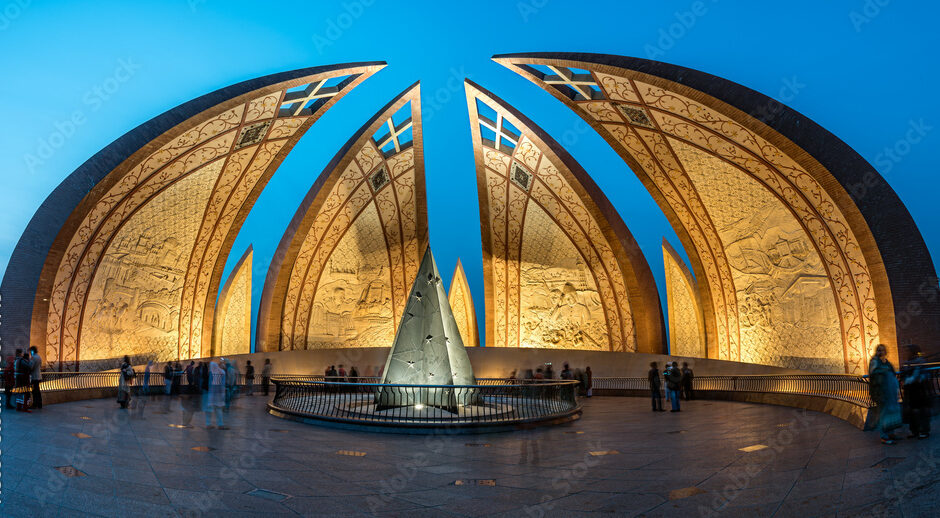Located in the heart of Islamabad, the Pakistan Monument stands as a proud symbol of the nation’s journey towards independence, unity, and national identity. This monumental structure not only commemorates Pakistan’s history but also showcases the country’s architectural brilliance and cultural diversity. Whether you’re a local resident, tourist, or history enthusiast, visiting this iconic landmark is a must. In this guide, we will explore its historical background, architectural design, visitor information, and cultural significance.
Key Facts About the Pakistan Monument Islamabad
| Attribute | Details |
| Name | Pakistan Monument |
| Pakistan Monument Location | Shakarparian Hills, Islamabad |
| Height | 70 meters |
| Construction Period | 2004 – 2006 |
| Architect | Arif Masood |
| Design Style | Fusion of Islamic, Mughal, and modern architecture |
| Materials | Red sandstone, marble, granite |
| Symbolism | Represents Pakistan’s four provinces and three territories |
| Nearby Attractions | Lok Virsa Museum, Shakarparian Hills, Fatima Jinnah Park |
| Visitor Hours | 8:00 AM to 10:00 PM |
History of Pakistan Monument
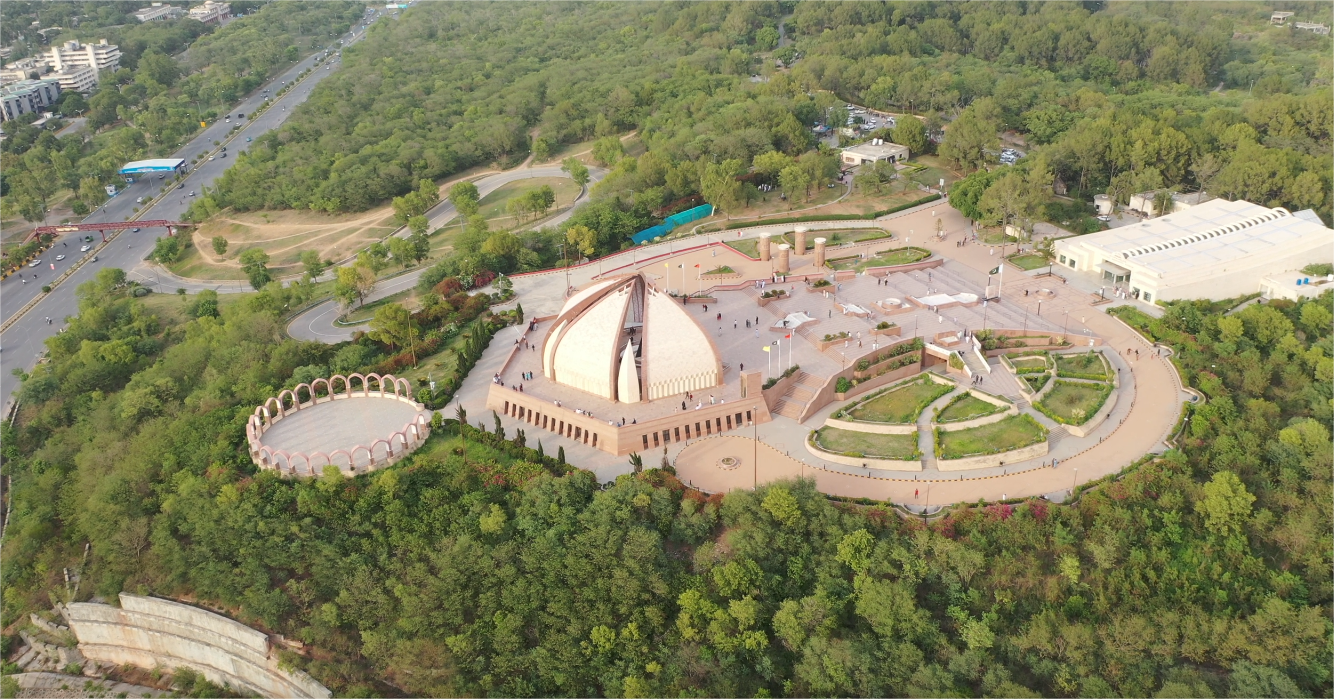
The national monument of Pakistan was commissioned to commemorate the nation’s journey towards independence and unity. It marks the Lahore Resolution of 1940, which led to the creation of Pakistan in 1947.
Inception and Design
The monument was conceived under President Pervez Musharraf’s vision in 2004 as a tribute to Pakistan’s historical, political, and cultural legacy.
The design competition, held in 2005, was won by Arif Masood, whose design was selected for its symbolic representation of Pakistan’s unity, diversity, and progress.
Construction Timeline
Construction began in 2004, and after two years of dedicated effort, it was officially inaugurated on March 23, 2007, marking Pakistan Day.
This date is significant as it commemorates the historic Lahore Resolution, passed on March 23, 1940, which laid the groundwork for the creation of Pakistan.
Architectural Design
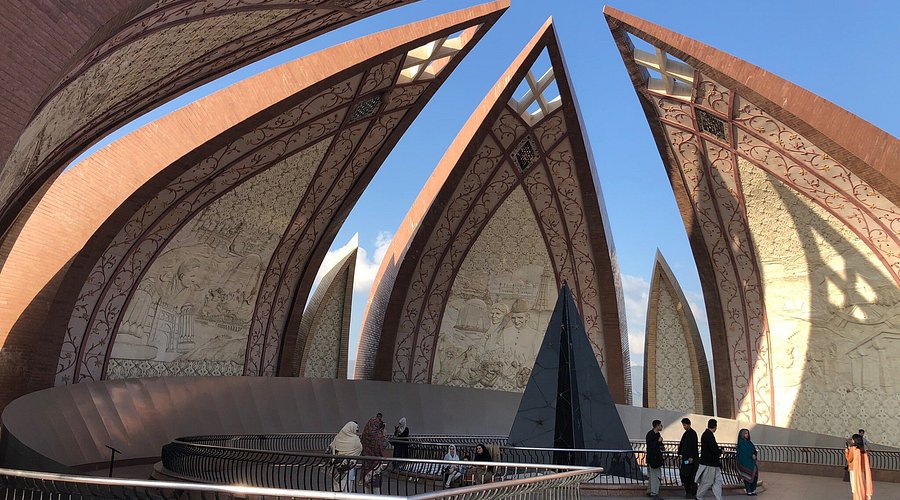
The design of the Pakistan Monument is a fusion of Islamic, Mughal, and modern architectural styles, reflecting Pakistan’s rich cultural heritage while incorporating contemporary elements.
The monument’s unique structure and symbolism make it a remarkable architectural feature in Islamabad.
Base and Symbolic Platforms
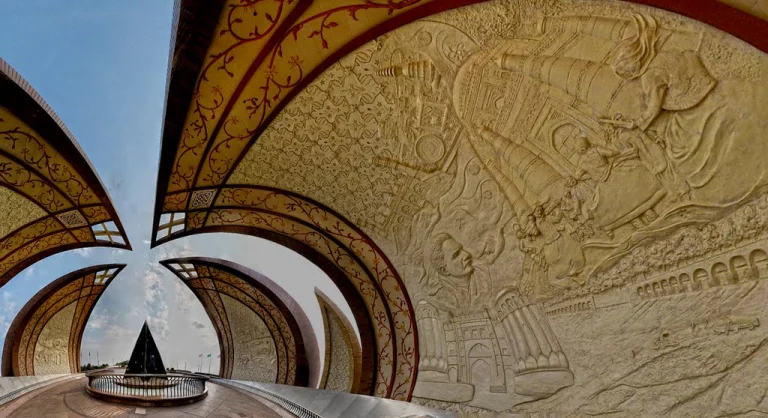
The base of the monument is shaped like an eight-petal flower, symbolizing growth, prosperity, and the birth of a new nation. Each of the four large petals represents one of the country’s provinces: Punjab, Sindh, Balochistan, and Khyber Pakhtunkhwa.
The three smaller petals represent the territories of Azad Jammu & Kashmir, Gilgit-Baltistan, and the former Federally Administered Tribal Areas (FATA).
The monument features four symbolic platforms that reflect different stages of Pakistan’s struggle for independence:
- Uncut stones from Taxila – Signifying the humble beginnings of the independence movement.
- Hammer-dressed stones – Representing the hardships and challenges faced by the Muslim League.
- Chiseled stones – Depicting the momentum and success of the Pakistan Movement.
- Polished white marble – Symbolizing the establishment and success of Pakistan.
Materials and Craftsmanship
- Red sandstone and marble are used extensively for the monument’s construction, while granite was imported from Brazil and marble from Spain.
- The intricate carvings and inscriptions on the monument include excerpts from the speeches of Muhammad Ali Jinnah and Allama Iqbal, along with Quranic verses and the national anthem in multiple languages; Urdu, Bengali, and English. These inscriptions serve as both cultural and historical markers.
Pakistan Monument Museum
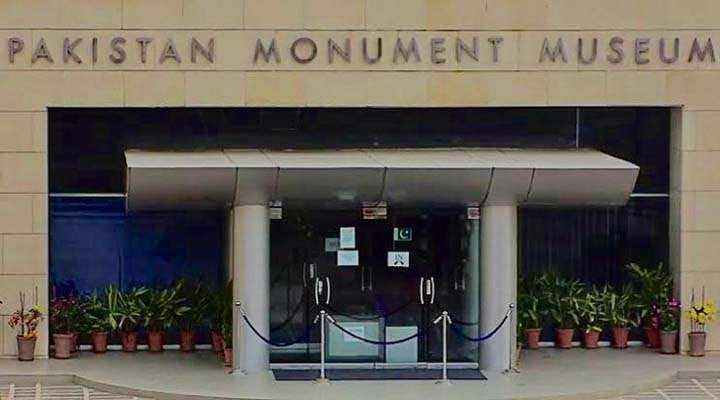
Adjacent to the monument is the Pakistan Monument Museum, a popular attraction that provides deeper insights into the country’s history and the struggles that led to its independence.
Exhibits and Features
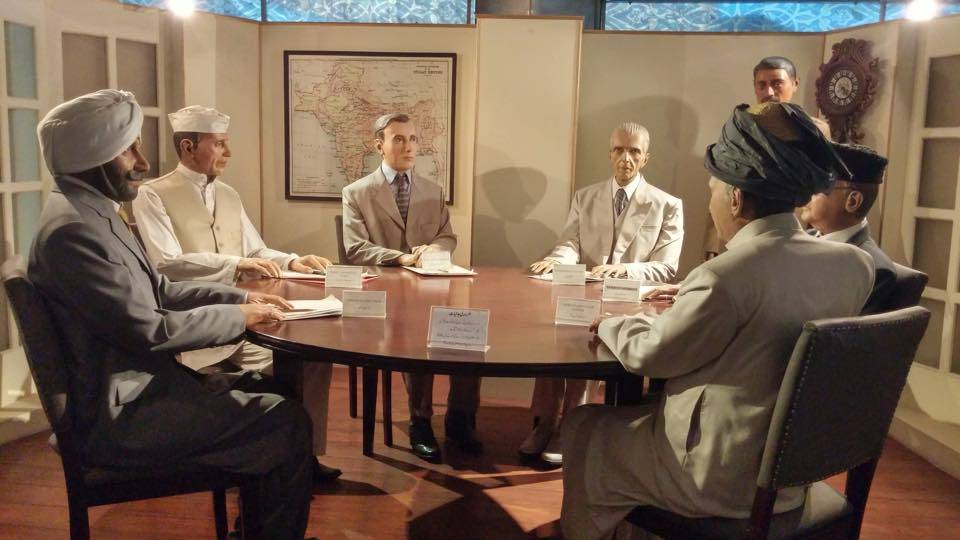
- Wax Statues: The museum showcases lifelike wax statues of notable figures from Pakistan’s history, including Muhammad Ali Jinnah, the founder of Pakistan, and Allama Iqbal, the visionary poet and philosopher.
- Artifacts and Displays: Visitors can explore various historical artifacts, documents, and photographs that illustrate the events leading up to Pakistan’s independence.
- Library and Auditorium: The museum also houses a reference library and auditorium that hosts educational programs and cultural events.
Timings and Entry Fee
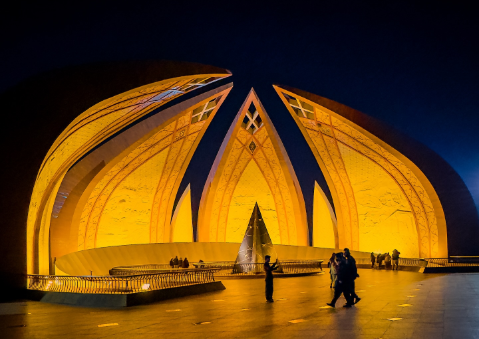
- Open: Daily from 8:00 AM to 10:00 PM.
- Entry Fee: The monument is generally free to visit; however, a nominal fee may apply for the museum or special events. It’s recommended to check for updates on Pakistan monument tickets prices.
Nearby Attractions
- Shakarparian Hills: Offers stunning panoramic views of Islamabad and Rawalpindi.
- Lok Virsa Museum: Showcases Pakistan’s cultural diversity with artifacts, handicrafts, and exhibitions.
- Fatima Jinnah Park: A large family park in Islamabad, perfect for leisure activities.
Visitor Tips
- Dress Modestly: As the monument is a national symbol, visitors are expected to adhere to modest dress codes.
- Guided Tours: Available for deeper insights into the monument’s significance and architecture.
- Photographers: Ideal for capturing breathtaking views of the monument, especially during the golden hour at sunset.
Cultural and Political Significance
Minar-e-Pakistan is more than just a monument; it serves as a living symbol of Pakistan’s national identity, its unity, and its historical struggle. It is central to national celebrations and commemorations of significant historical events.
National Role
- The monument is a key site for Pakistan Day celebrations (March 23), when rallies, national ceremonies, and public events are held.
- It also serves as a site for political rallies and cultural events, reinforcing its role as the nation’s heartbeat and a symbol of unity.
Symbolism of Unity
- The monument represents the four provinces and the three territories of Pakistan, highlighting the unity in diversity that is central to the country’s national identity.
- It serves as a poignant reminder of the sacrifices and struggles that the Pakistani people endured to achieve independence.
Conservation Efforts
Since its inauguration, the Pakistan Monument has undergone several restoration and conservation efforts to preserve its architectural integrity and ensure its future as a cultural heritage site.
UNESCO Recognition
- In 2013, the Pakistan Monument was added to the UNESCO Tentative List for consideration as a World Heritage Site.
Preservation Initiatives
- Regular Maintenance: The monument receives continuous upkeep and repairs to preserve its marble inlays and structural stability.
- Lighting and Landscaping: Enhancements to the lighting system and surrounding gardens ensure the monument remains an iconic symbol of Pakistan.
FAQs
What’s Pakistan Monument History?
It is a national monument built in Islamabad that represents Pakistan’s unity, heritage, and historical significance.
Who Designed the Pakistan Monument?
The monument was designed by Arif Masood, whose design symbolizes the nation’s unity and progress.
When was the Pakistan Monument Inaugurated?
It was officially opened on March 23, 2007, to commemorate Pakistan Day.
What Materials were Used in the Construction of the Monument?
The monument was built using red sandstone, marble, and granite, sourced from Brazil and Spain.
What are the Visiting Hours for the Pakistan Monument?
The monument is open daily from 8:00 AM to 10:00 PM.
Conclusion
The Pakistan Monument is not just a remarkable feat of architectural brilliance but also a symbol of national pride, unity, and heritage. Whether you’re exploring the marble-clad base or admiring the symbolic murals inside, this monument offers an immersive experience into Pakistan’s history and culture. Visitors can explore its rich heritage and political significance, making it a vital landmark for anyone seeking to understand Pakistan’s journey toward independence.
For more information on tourist attractions like Minar-e-Pakistan, visit Chakor blogs.

